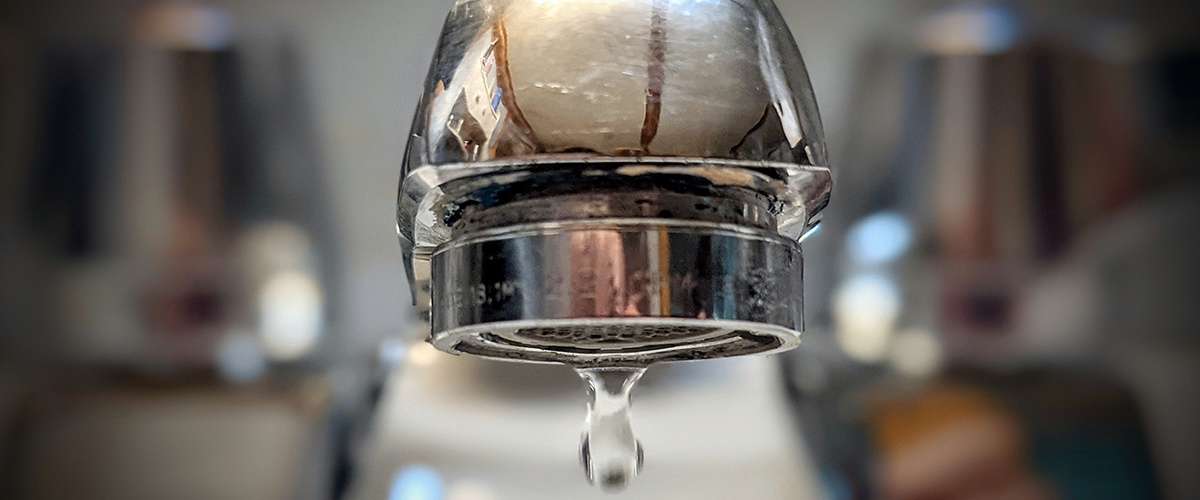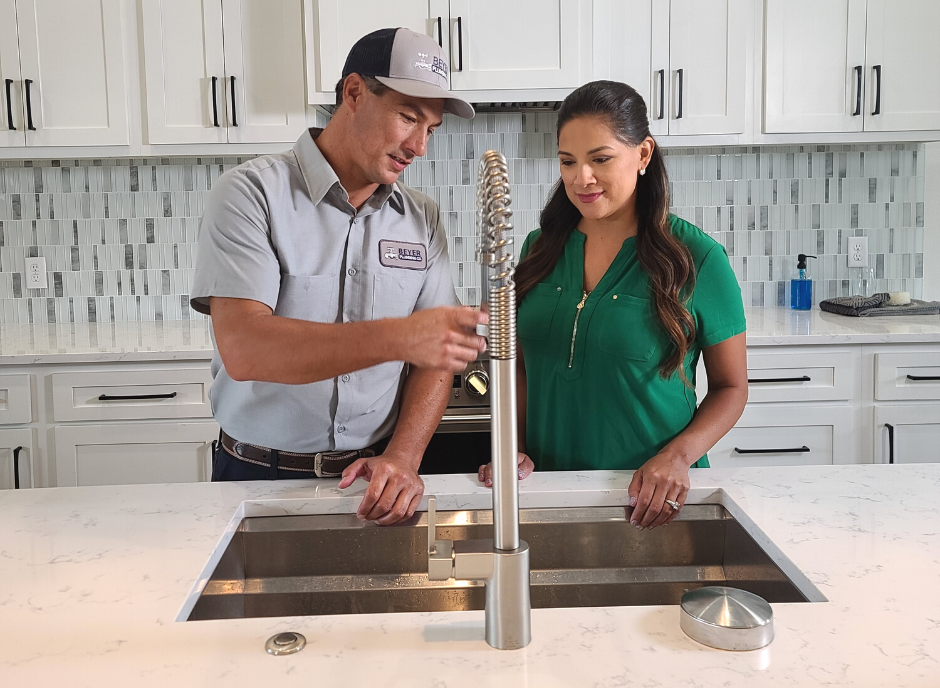What It's Required to Resolve a Broken Faucet
What It's Required to Resolve a Broken Faucet
Blog Article
What are your ideas regarding Why Are My Faucets Dripping (And Can I Fix It Myself)??

Dripping faucets may feel like a small hassle, however their effect exceeds just the inconvenience of the noise. From drainage to sustaining unnecessary economic costs and health risks, disregarding a trickling tap can result in different repercussions. In this post, we'll look into why it's crucial to address this usual household issue without delay and successfully.
Wastage of Water
Ecological Influence
Leaking taps contribute dramatically to water wastage. According to the Environmental Protection Agency (EPA), a solitary tap dripping at one drip per secondly can waste more than 3,000 gallons of water each year. This not just pressures water resources but likewise influences ecosystems and wildlife based on them.
Step-by-Step Guide to Repairing a Dripping Faucet
Devices Required
Before trying to fix a trickling faucet, collect the required devices, consisting of an adjustable wrench, screwdrivers, substitute components (such as washers or cartridges), and plumber's tape.
Usual Faucet Issues and Their Solutions
Identify the kind of faucet and the certain concern causing the drip. Common issues include worn-out washers, corroded valve seats, or defective O-rings. Refer to producer directions or on the internet tutorials for detailed support on fixings.
Financial Prices
Boosted Water Expenses
Beyond the environmental influence, leaking faucets can blow up water expenses significantly. The accumulated wastefulness in time translates right into higher utility expenditures, which might have been avoided with timely fixings.
Prospective Residential Property Damage
In addition, extended trickling can result in damage to components and surfaces bordering the tap. Water accumulation can create staining, deterioration, and also architectural problems if left neglected, causing extra repair expenses.
Wellness Problems
Mold And Mildew and Mold Development
The constant visibility of dampness from a trickling faucet develops a perfect environment for mold and mildew and mold growth. These fungis not just jeopardize interior air high quality but likewise pose wellness threats, particularly for individuals with respiratory system conditions or allergic reactions.
Waterborne Diseases
Stagnant water in trickling faucets can end up being a breeding place for germs and other pathogens, raising the risk of waterborne illness. Impurities such as Legionella bacteria prosper in stagnant water, potentially resulting in major diseases when ingested or inhaled.
Do it yourself vs. Specialist Repair
Advantages and disadvantages of DIY Repair Service
While some may try to take care of a leaking tap themselves, do it yourself repair work include their own set of difficulties. Without appropriate knowledge and devices, do it yourself efforts can intensify the issue or cause insufficient repair services, lengthening the trouble.
Benefits of Employing a Specialist Plumber
Working with a specialist plumber makes certain that the underlying cause of the leaking tap is addressed efficiently. Plumbers possess the know-how and devices to identify and fix faucet issues effectively, conserving time and decreasing the risk of further damage.
Environmental Responsibility
Specific Contribution to Conservation
Taking responsibility for fixing leaking faucets aligns with wider initiatives toward water preservation and environmental sustainability. Every person's actions jointly make a considerable impact on protecting valuable resources.
Lasting Living Practices
By prioritizing timely repairs and embracing water-saving behaviors, individuals contribute to lasting living techniques that benefit both present and future generations.
Preventive Measures
Routine Maintenance Tips
To prevent dripping faucets, carry out regular upkeep such as cleansing aerators, inspecting for leaks, and replacing worn-out parts quickly. Furthermore, think about setting up water-saving gadgets or upgrading to much more efficient components.
Value of Prompt Services
Addressing dripping taps as soon as they're noticed prevents more water wastefulness and prospective damage, eventually saving both water and money in the future.
Impact on Home Worth
Perception of Well-Maintained Building
Preserving a residential or commercial property in good condition, consisting of addressing maintenance problems like leaking taps, boosts its perceived value and worth amongst possible customers or lessees.
Impact on Resale Value
Qualities with properly maintained plumbing components, consisting of faucets, command greater resale values in the real estate market. Attending to leaking taps can add to a favorable impact throughout residential property assessments and arrangements.
Final thought
Dealing with a dripping tap exceeds simple convenience; it's an essential action towards preserving water, minimizing economic expenses, and safeguarding health and residential or commercial property. Whether with do it yourself repair services or professional support, doing something about it to take care of leaking taps is a tiny yet impactful method to promote accountable stewardship of sources and add to a healthier, much more lasting future.
Most Common Reasons for a Leaky Faucet and How to Stop the Drip
Whether it’s your kitchen faucet leaking or a bathroom faucet leaking, one leaky faucet can waste anywhere from three to 30 gallons of water every single day. If the constant drip-drip-drip doesn’t get your attention, your water bill will. The good news is that, by following a few simple steps, chances are pretty good you can fix the problem yourself.
Why is it dripping?
Before you start taking things apart, let’s break down some of the most common causes of a leaky faucet.
Bad O-ring.
A cartridge is a valve that controls the flow of water into the faucet spout. On cartridge faucets there’s an O-ring—the little disc attached to the stem screw that holds the faucet handle in place. If it’s loose or worn-out, it can cause your sink handle to leak. Of course, the cartridge itself could be worn out. If that’s the case, make sure you replace it with the exact same kind.
Corroded valve seat.
The valve seat connects the faucet and the spout. If the leak seems to be coming from the spout, it might be because a buildup of water sediment has corroded the valve seat.
Worn-out washers or seals.
A leaky spout could be caused by a bad washer that rests against the valve seat. It’s just a matter of time before friction takes its toll. It could also be the wrong size washer or one that’s been installed incorrectly. Water sediments can also corrode inlet and outlet seals.
Water pressure.
If the faucet only drips now and then, or when you turn the handles a certain way, you should probably check your home’s water pressure.
Loose or broken parts.
The adjusting ring and packing nuts in the stream screw can become loose over time, causing your sink handle to leak. Try tightening or replacing the packing nut. If the leak is coming from the pipes underneath the sink, you probably have a broken pipe or fitting. If that’s the case, you should definitely call a plumber.
Know your faucet.
Faucets come in a variety of types. Each one has its own assembly—and its own possible causes of leaks. Learning about the four most common kinds of faucets will help you know how to take them apart and make any repairs.
How to stop a leaky faucet
Fixing that leaky faucet doesn’t have to take a lot of time, money, or expertise. It’s usually a simple matter of replacing a worn-out washer or gasket, a loose O ring, or another part. Chances are really good you can do this yourself if you follow these simple steps.
Shut off the water.
Before you tackle the faucet, cut off the water supply to the sink. There should be one valve for hot and one for cold. Hand-turn them clockwise with your hands till they close. If there are no valves under the sink, head to the basement and shut off the main water supply to the house. Then turn on the faucet until it empties out the water that’s still in the line and you’re ready to start. It’s a good idea to cover the sink drain with a plug or a rag so you don’t lose any small pieces and parts while you’re working.

I came across that entry about Leaky Faucets: Why They Happen & What to Do About Them when doing a lookup on the web. Sharing is nice. Helping others is fun. I praise you for being here. Please check our blog back soon.
Report this page